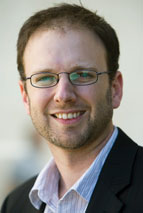From the editor: Diversity and mentoring in particle physics
 |
| Photo: Reidar Hahn, Fermilab |
Women and minorities are significantly underrepresented in physics. There are many possible reasons for the imbalance, and understanding the causes is a challenging task. In this issue of symmetry, we look at how particle physics laboratories and the science community are tackling parts of the problem and trying to create a more diverse workforce.
Fermilab recently commissioned an independent consulting firm to study issues that influence diversity at the lab. The firm convened a series of focus groups consisting of randomly selected participants, whose identities were withheld from laboratory leadership to encourage honest feedback.
On the positive side, the consulting group reported that discrimination against women and minorities was not a contributing factor to lack of diversity. On the other hand, participants revealed a number of general management weaknesses among line managers, potentially due to lack of training and mentoring, and some significant issues for visiting scientists from outside Fermilab. The visitors, typically graduate students and postdoctoral fellows, often do not have mentors and have trouble getting the support they need to do their work effectively.
This observation is important for all institutions that have a large proportion of visiting students, postdocs, and scientists. Because people tend to learn institutional processes better from other people than from an abstract handbook or set of rules, mentoring is vital. Good mentoring would certainly help institutions in many ways, quite likely helping to create a more diverse workforce.
But the issue of mentoring young visiting scientists also reveals that no institution can solve by itself the challenges of changing a culture within a scientific discipline. Cultural change is needed to improve workforce diversity throughout physics. There is so much mixing of people among institutions in particle physics that cultural change will need a coordinated approach. This is a serious challenge but we think it is worth the investment of time and resources.
Click here to download the pdf version of this article.


